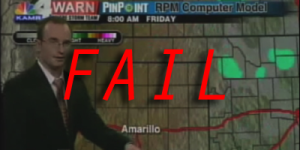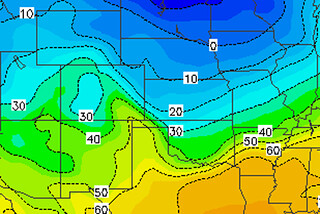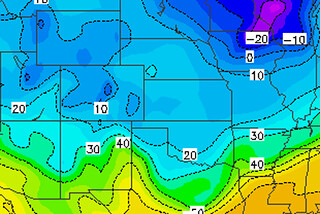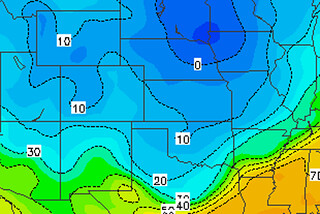 The picture on the article might be a little exaggerated, but I know that is how a lot of people feel. A lot of times, I try to give everyone advanced warning when adverse weather is about settle across an area. Be it severe thunderstorms, blizzards or extreme heat, I try to keep everyone ahead of the weather.
The picture on the article might be a little exaggerated, but I know that is how a lot of people feel. A lot of times, I try to give everyone advanced warning when adverse weather is about settle across an area. Be it severe thunderstorms, blizzards or extreme heat, I try to keep everyone ahead of the weather.
Most times I feel like I succeed. Sometimes, I don’t.
I have a lot of people ask me how I do it. What do I look at, how do I read the weather models and, dude, how could I miss the afternoon high temperature? They are all great questions that can be answered by the same sentence: You can’t always trust the weather models.
This is especially true in unique climate regions – like the high plains.
Here’s a quick example…
Here is a post from November 15th discussing what the GFS computer weather model was suggesting for the following Friday, the 22nd.
At that time, it was looking like a rain snow mix across the Texas panhandle. Snow to the northwest and rain to the southeast. But, I also know, you can’t always trust the computer weather models. They’re good. They’re a useful tool. But they don’t have bullseye accuracy.
Turns out the GFS did a decent job. There were reports of between 1/2″ and 1″ of snow in the northwestern counties of the Texas panhandle and freezing rain / sleet / snow showers to the southeast of Amarillo. But, things weren’t quite as white as the model suggested for everyone.
“Decent” is good enough for government work, as they say, but for me, it’s not good enough for predicting the weather.
That brings me to the biggest hurdle every weather-person faces in a given year: Holiday forecasting.
As we inch closer to Christmas a lot of people ask me what the weather is looking like. It’s tough. Because there is so much run-to-run inconsistency with our medium-range models at this distance in time.
A perfect example is today’s GFS model. During the day it will render a new collection of data every six hours. So, I decided to grab the output for Saturday, December 21, the last Saturday before Christmas.





This is just from ONE day.
And really, this is a great example of two things. On the one hand, it shows the variability and inconsistency of our medium-range models at 10 days out. On the other hand, it is a great example of “trending” within a model. Often times, you’ll hear me say, “The models are trending toward a colder Saturday” and this is exactly what that means. Notice that with each next output – from 12-10 18z to 12-11 18z – the cold air looks to be spilling back to farther the west.
A good rule is to look at these models – especially this far out – as a guide. A boundary, even. I like to use them to set my barriers. I can say with medium confidence that it looks like we won’t be any warmer than 65 or any colder than -5. It sounds like an incredibly wide window, and truthfully it is at this point. But, as we get close and the models continue to have more consistency, I can do the same. Perhaps, in two more days I’ll be able to whittle it down to a 55 to 15 range, then to a 42 to 28 range. By the time we get to next Tuesday or Wednesday I should have a pretty good feel for what the temperatures will look like.
And being able to accurately predict the weather within – a few degrees – at least three to five days out is the ultimate goal. But, a lot of times model inconsistencies, the randomness of Mother Nature and diverse climate zones make it very difficult.
That is why I say, “you can’t always trust those models” and sometimes a gut-feeling can be just as good.

